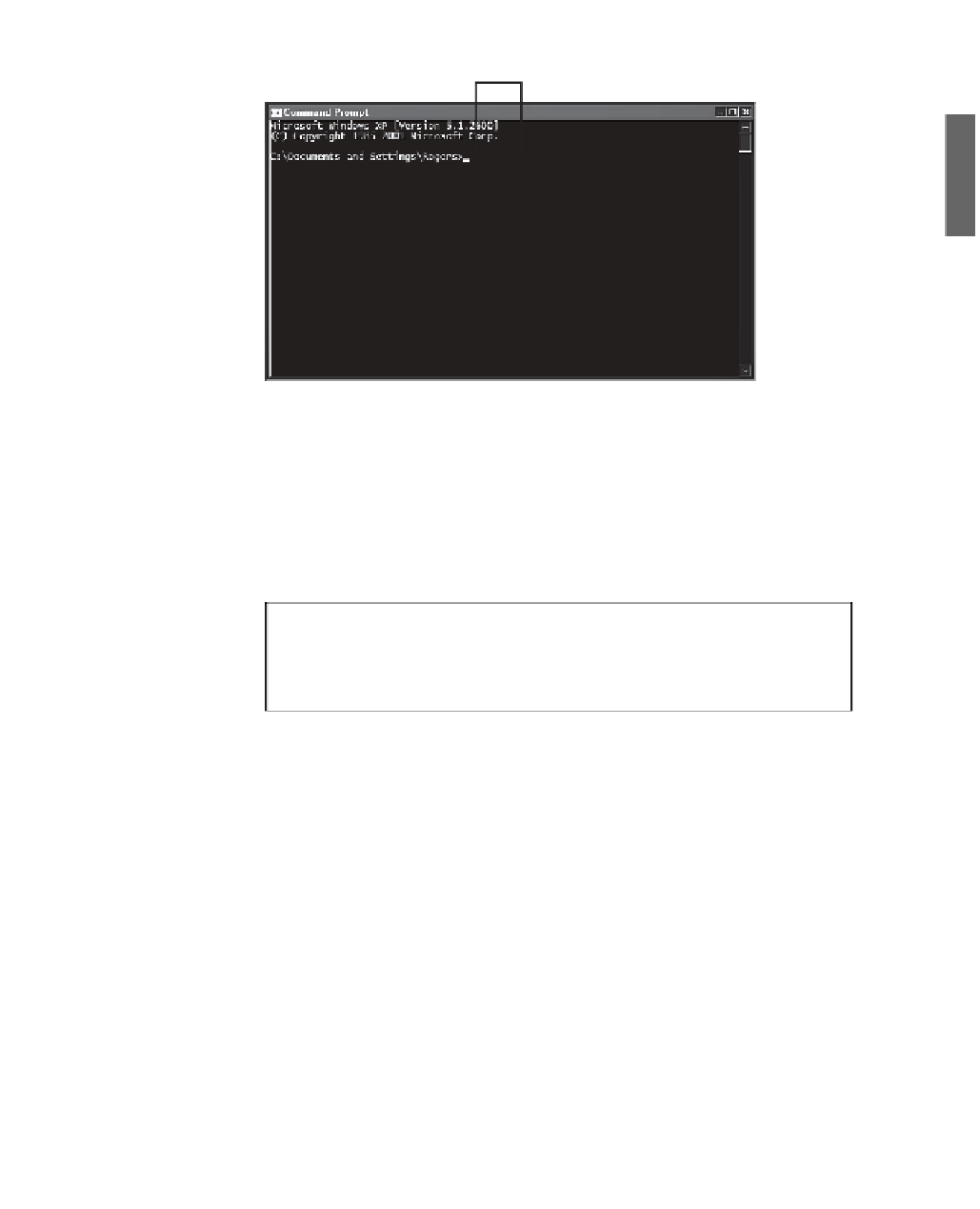Java Reference
In-Depth Information
Command line
FIGURE A.2
Using a newly
opened command-
line window.
A
In the window, a cursor blinks on the command line whenever you can type in a new
command. In Figure A.2,
C:\Documents and Settings\Rogers>
is the command line.
Because MS-DOS can be used to delete files and even format your hard drive, you
should learn something about the operating system before experimenting with its com-
mands.
NOTE
If you'd like to learn a lot about MS-DOS, a good book is
Special
Edition Using MS-DOS 6.22, Third Edition
, published by Que
(emphasis on the words “a lot”—the topic is 1,056 pages long).
However, you only need to know a few things about MS-DOS to use the kit: how to cre-
ate a folder, how to open a folder, and how to run a program.
Opening Folders in MS-DOS
When you are using MS-DOS on a Windows system, you have access to all the folders
you normally use in Windows. For example, if you have a
Windows
folder on your
C:
hard drive, the same folder is accessible as
C:\Windows
from a command line.
To open a folder in MS-DOS, type the command
CD
, followed by the name of the folder,
and press Enter. Here's an example:
CD C:\TEMP
When you enter this command, the
TEMP
folder on your system's
C:
drive will be opened,
if it exists. After you open a folder, your command line will be updated with the name of
that folder, as shown in Figure A.3.


